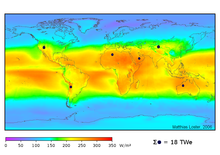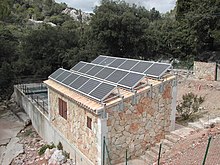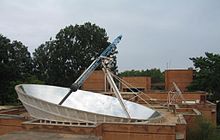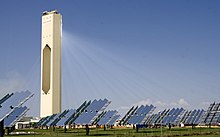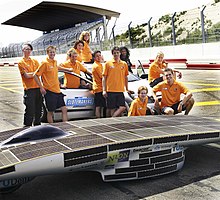TNB to call for tender for the project in Putrajaya soon
PETALING JAYA: Tenaga Nasional Bhd (TNB) has completed the
pre-qualification tender process for Malaysia's first solar power plant to be
located in Putrajaya. The utility will “very soon” call for tenders for the
project that is estimated to cost some RM60mil, according to TNB president and chief executive officer Datuk Seri Che Khalib Mohamad Noh.
The plant's generating
capacity may be too small to make the profit-minded or renewable energy
advocates jump, but it marks a major step forward in the country's drive to
harness renewable energy sources to wean itself from an over-reliance on fossil
fuels, which will run out one day, and its impact on climate change.
In an interview with StarBiz,
Che Khalib said the solar power plant would take 12 months for completion and
would be located in the buffer zone of an existing power station in Putrajaya.
“One of the main
concerns about solar power is the need for large tracts of land. So, we've
decided to build the solar power on the 500m buffer area in the existing power
plant,” he said. “The added advantage is that the cost will also be lower as
there is already a substation in the location and we can immediately connect to
the system.”
Solar power and other
renewable energy sources feature prominently in the Economic Transformation
Programme
The cost of a solar
power plant is estimated at US$4mil per megawatt (MW). For perspective, that
makes it roughly six times more costly than putting up an open cycle gas-fired
plant, four times more expensive than a combined-cycle gas plant and just under
three times higher than a coal-fired plant.
“But that's not
exactly an apple-to-apple comparison as coal and combined-cycle plants can go
up to 80% load factor whereas a solar plant can only run on peak load,” said an
industry analyst.
Che Khalib said: “This
is our initiative. We know it's not going to give us an economic return based
on the current tariff system but this will be a learning process for us. By
doing this, we will have a head-start in terms of knowledge. Also, when we
receive proposals for solar power, we will know (what it takes to set up such a
plant).”
TNB will implement the
project based on three types of solar technology silicon, thin film and
polycrystalline. (There are various technologies used in the making of solar
panels and they vary in terms of cost, panel surface, durability and
longevity.)
“It will be 2:2:1 in
any combination to provide our people with the knowledge of how solar projects
can be implemented in the country,” he elaborated.
While Malaysia has a
rich supply of sunlight and should be aggressively tapping solar power, Che
Khalib said one dampener was the clouds which could diminish the efficiency of
solar panels. Secondly, he pointed out that unlike some Western nations,
Malaysia did not have unproductive land.
“The US has a lot of
desert. They can't do anything much with the desert so they put up solar panels
there. In Malaysia, there will be a trade-off as its soil is fertile. There
will be an economic trade-off. We can still pursue it, but it's a question of
cost and economic feasibility.”
Solar power, as well
as other renewable energy sources, feature prominently in the Government's
Economic Transformation Programme. Under the energy Entry Point Programme, the
target is for Malaysia to build solar power capacity up to 1.25 gigawatt by
2020. The plan has also set a renewable energy target of 5.5% of total capacity
mix in 2015, from less than 1% of energy mix today.
Globally, major
countries have set far more ambitious targets in the race to be leaders in the
realm of clean energy, including solar power or photovoltaic power generation.
As it stands now, Taiwan boasts of having Asia's largest power plant which sits
on a 2ha site and is capable of generating 100MW of clean energy.



